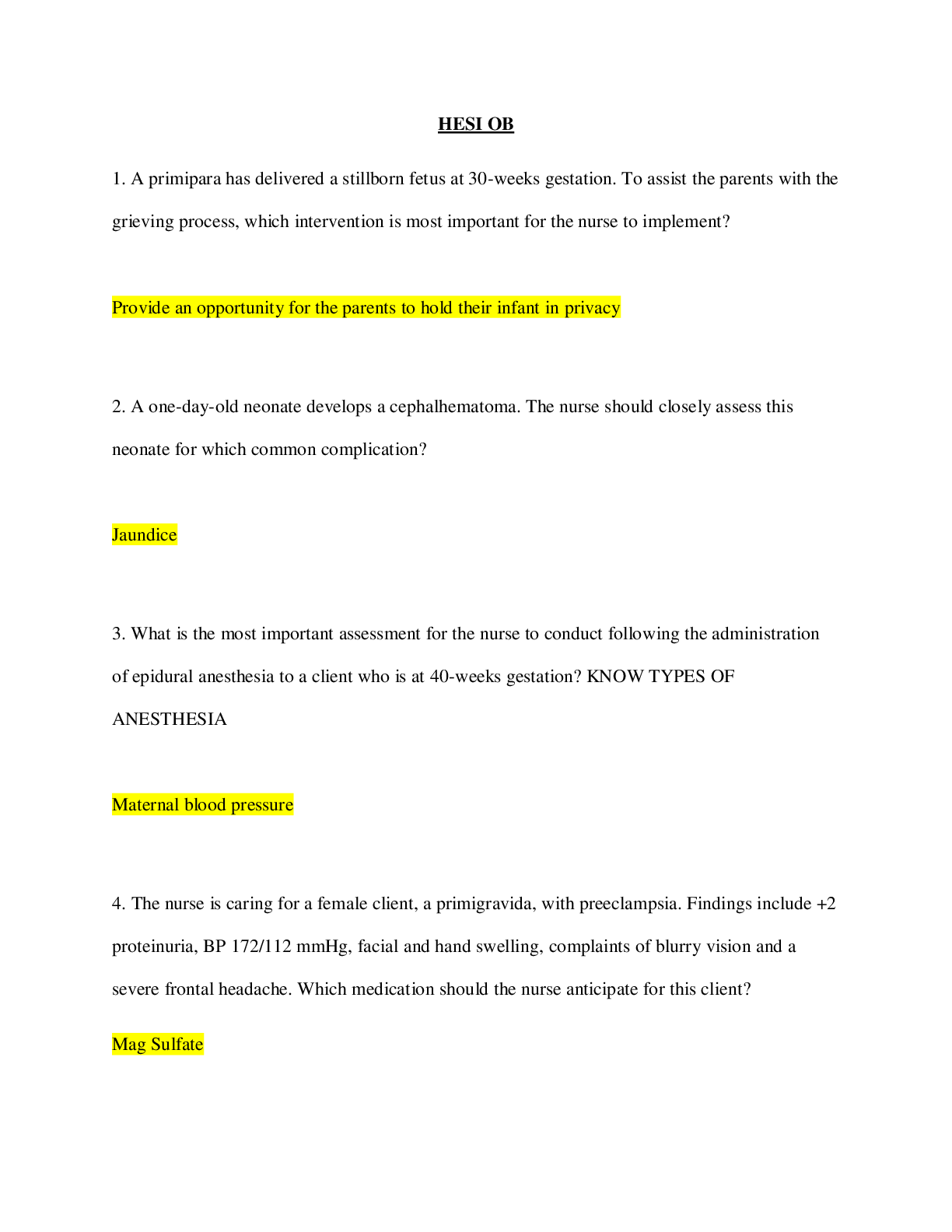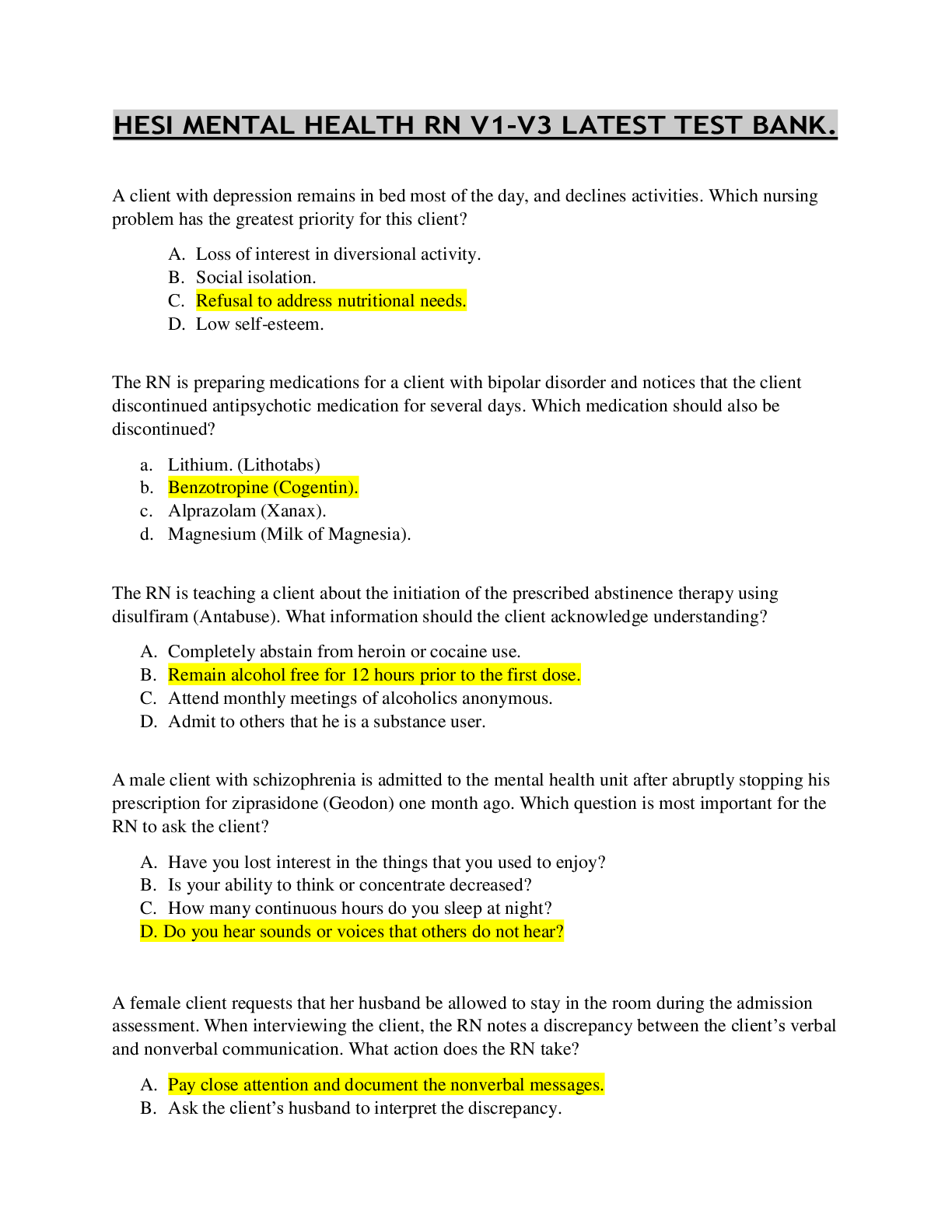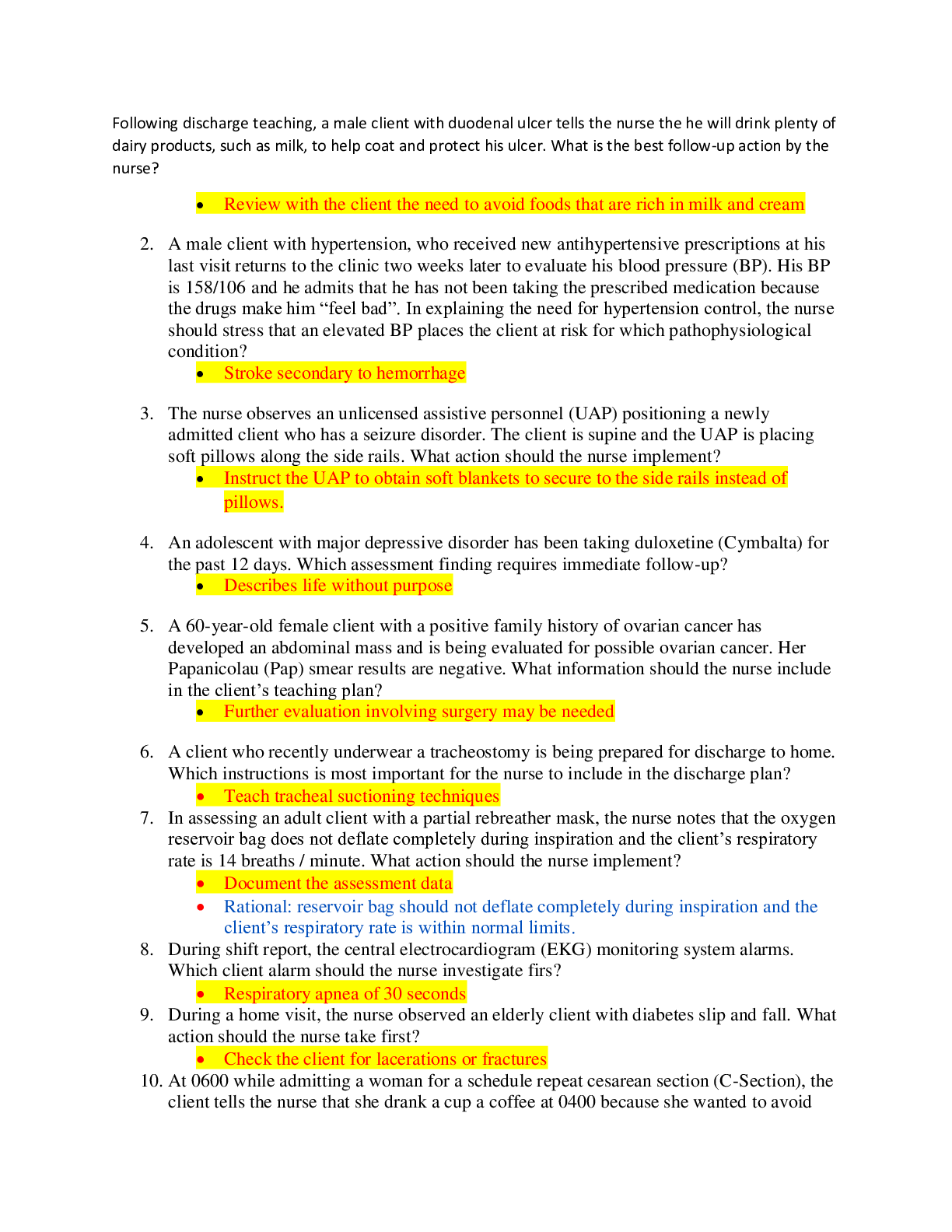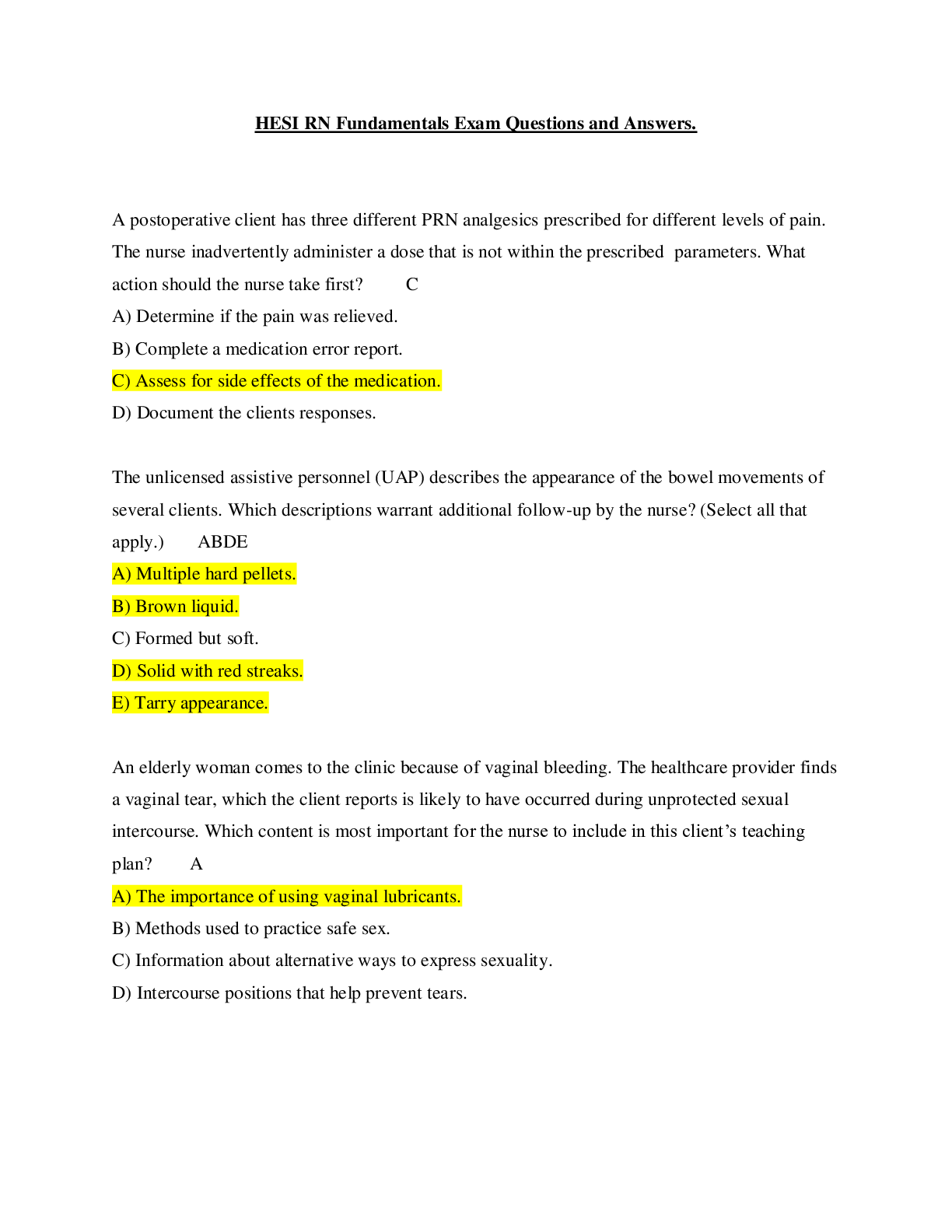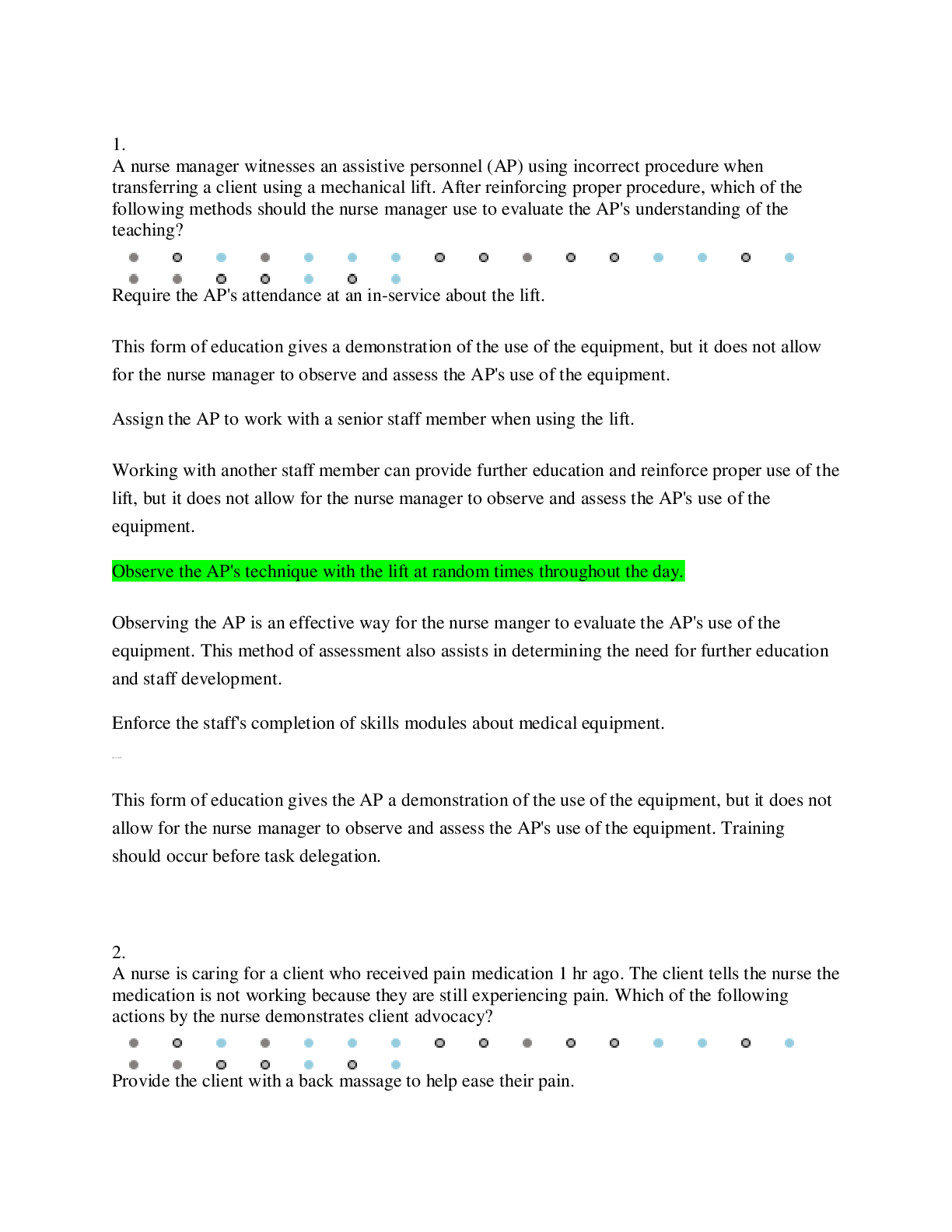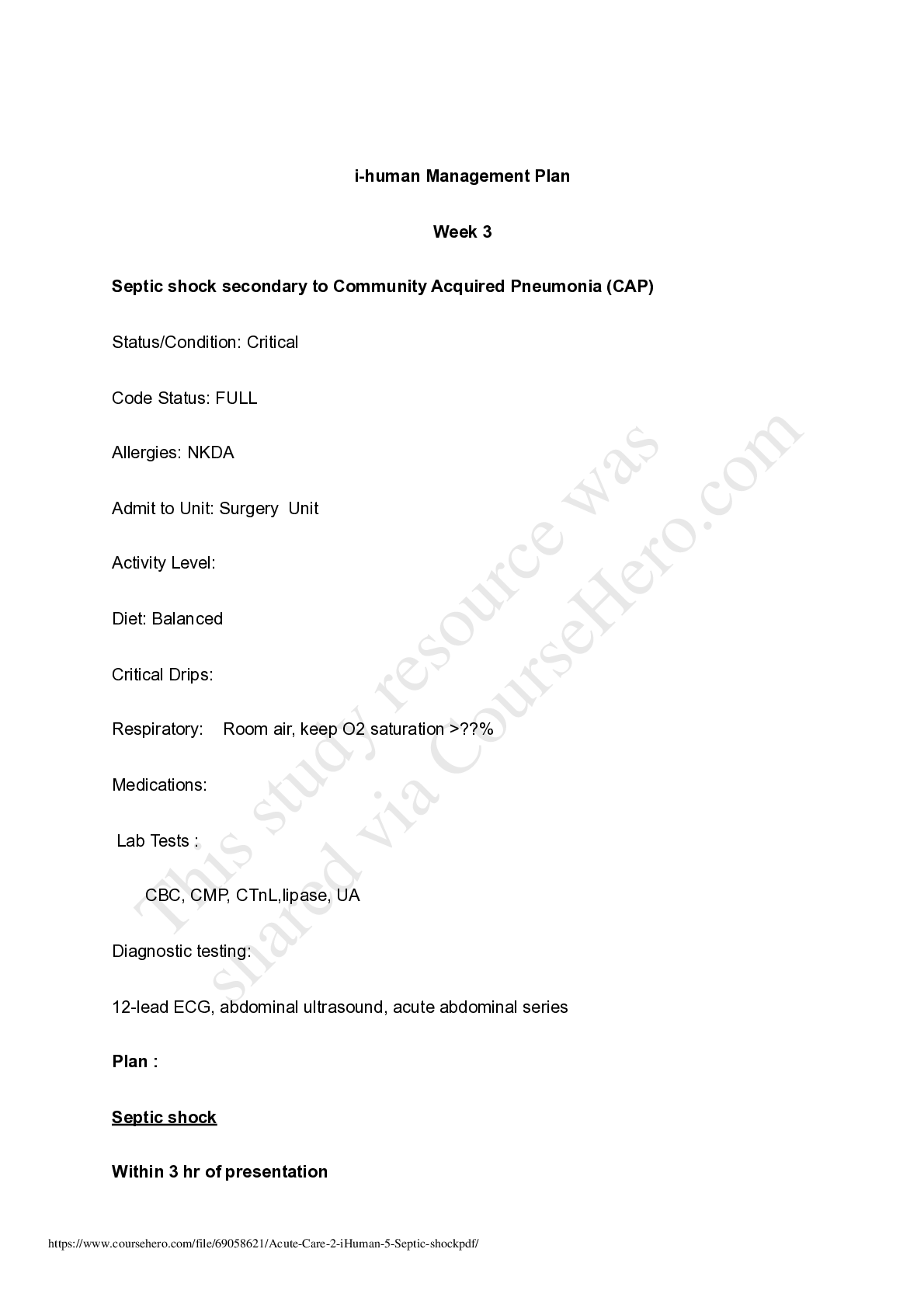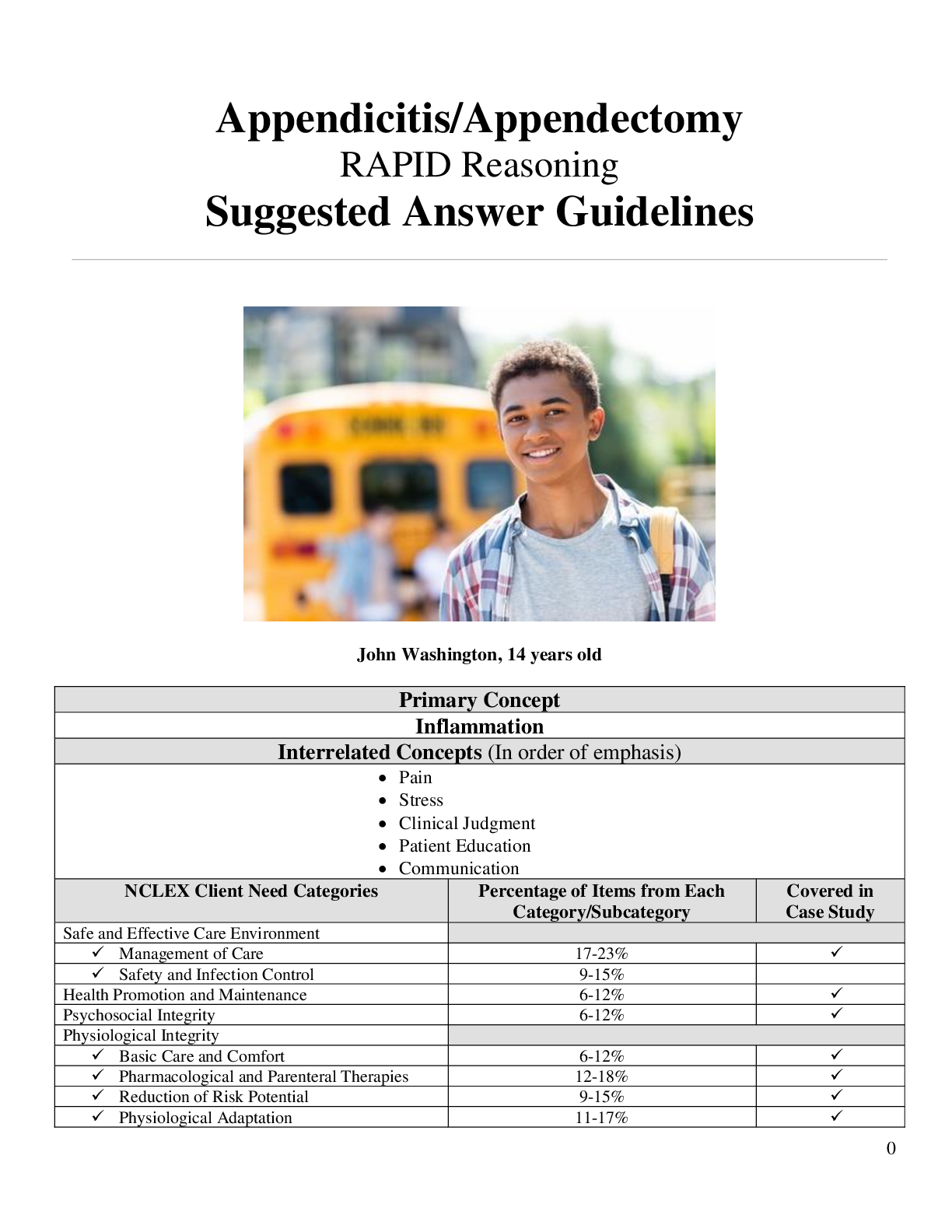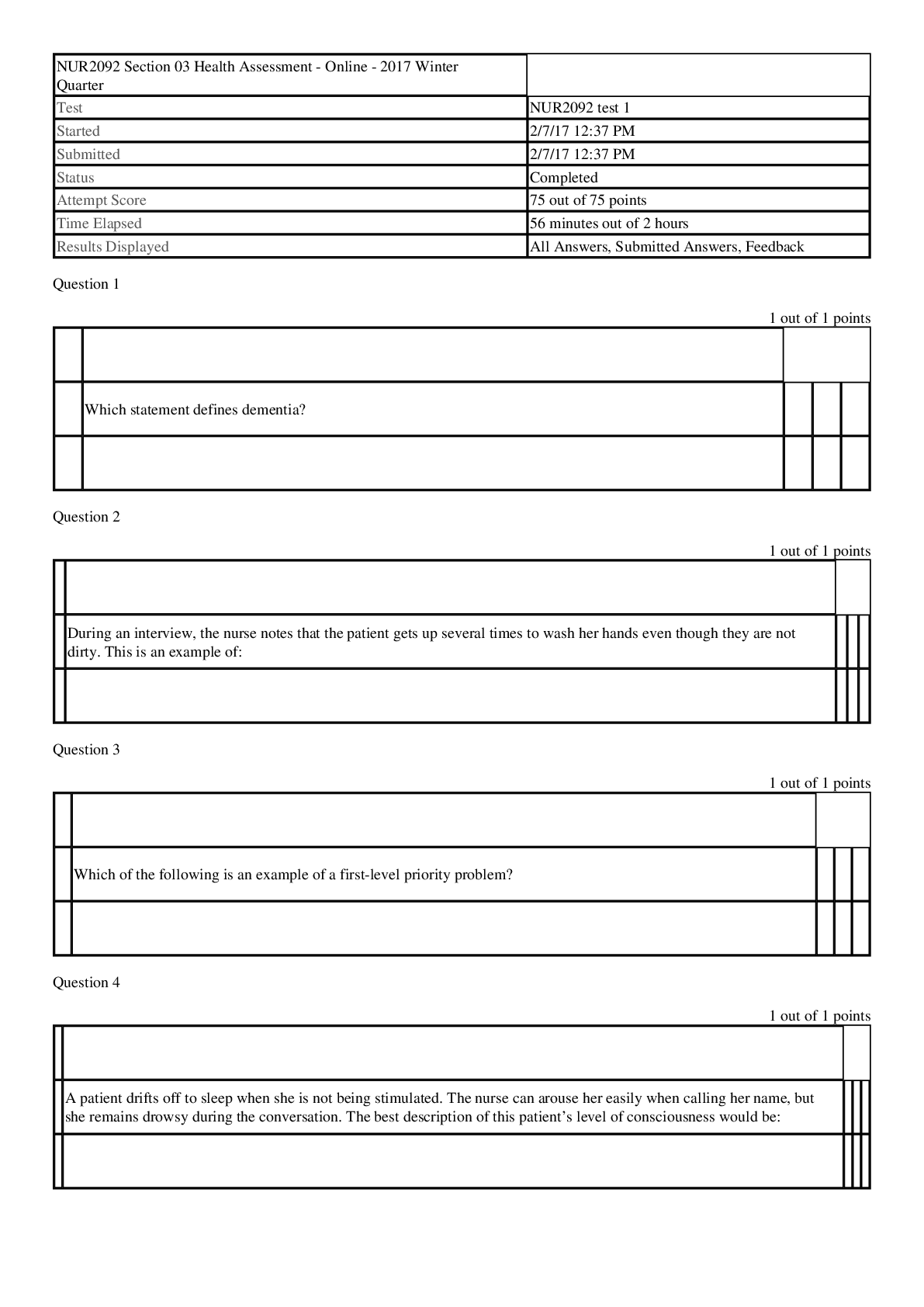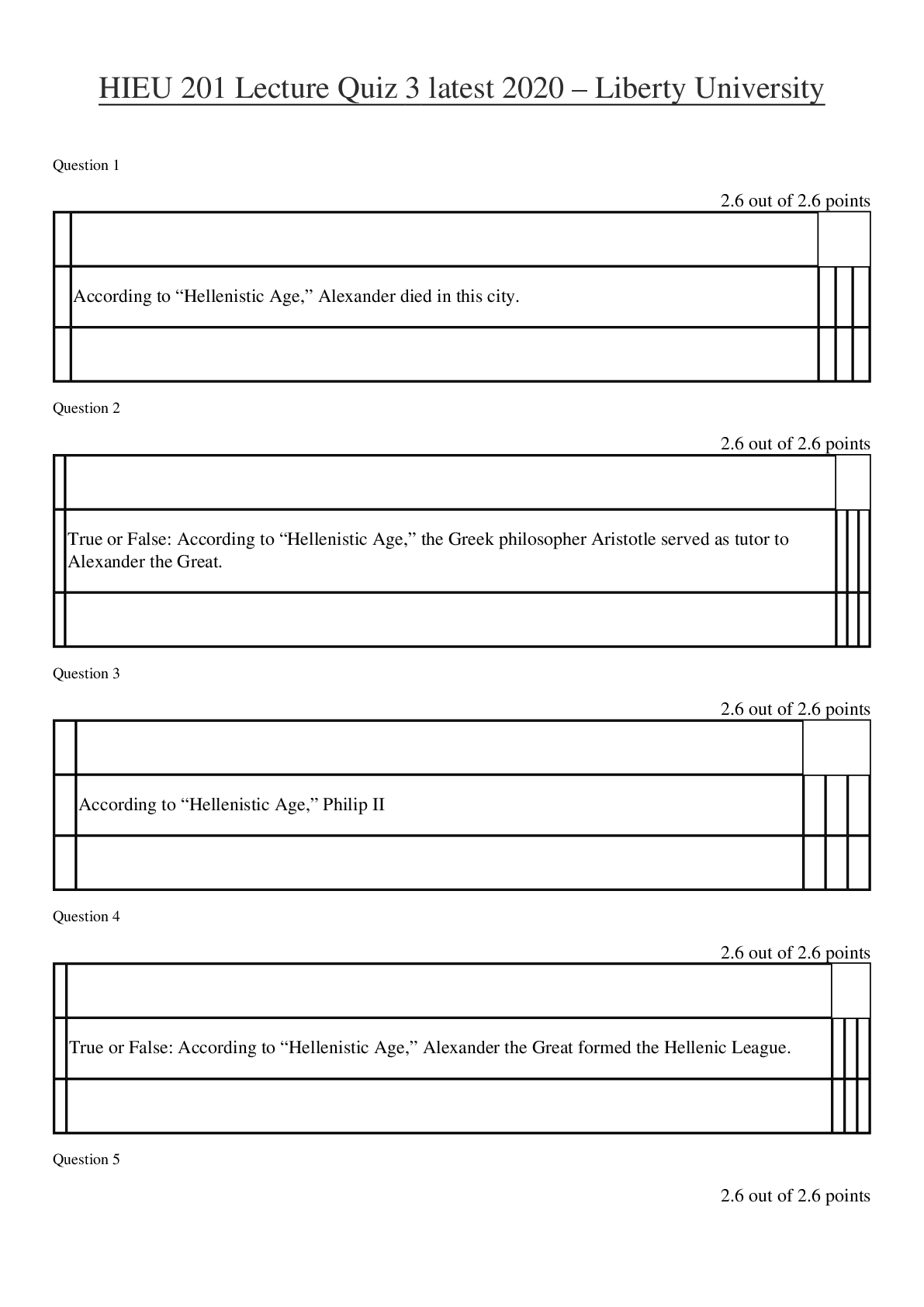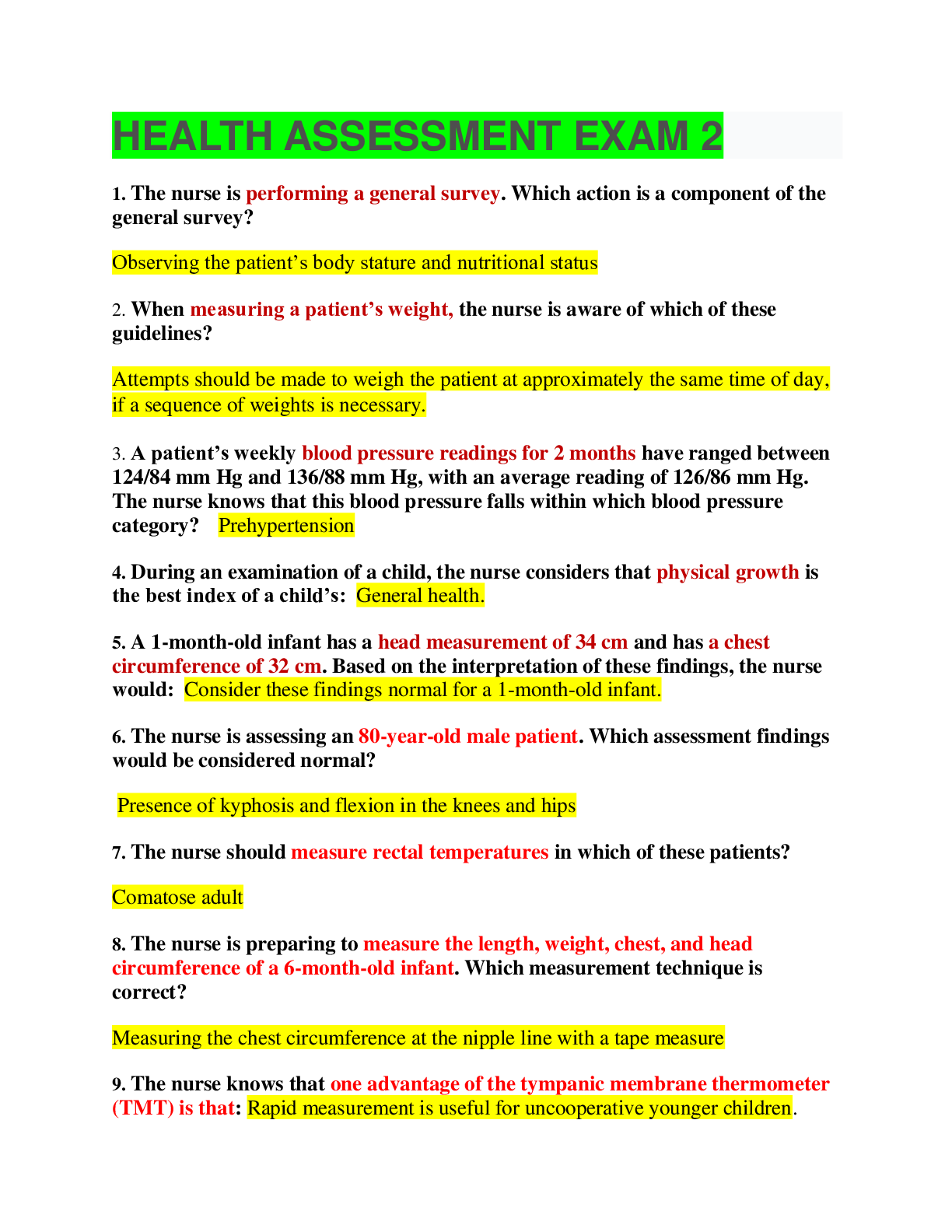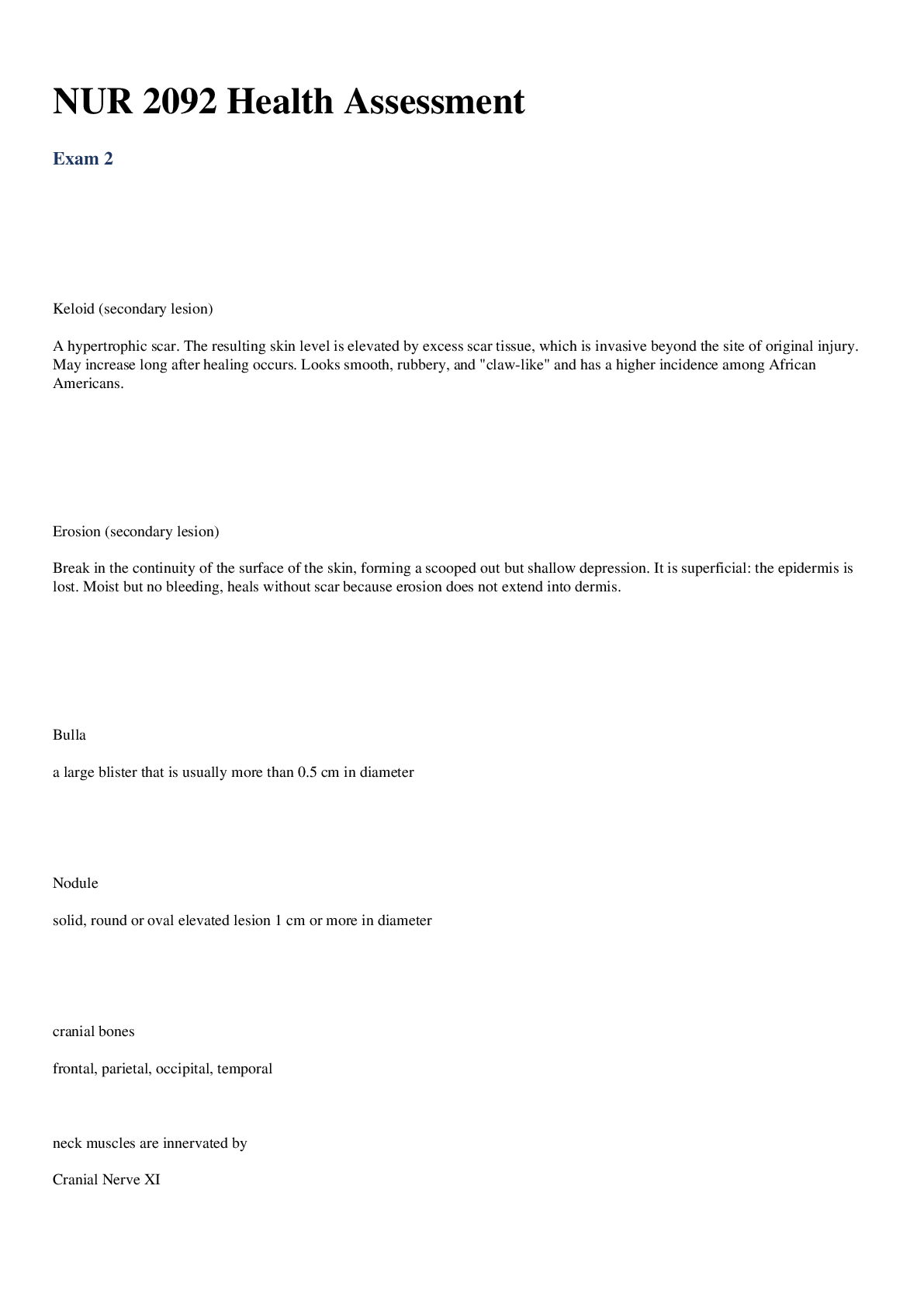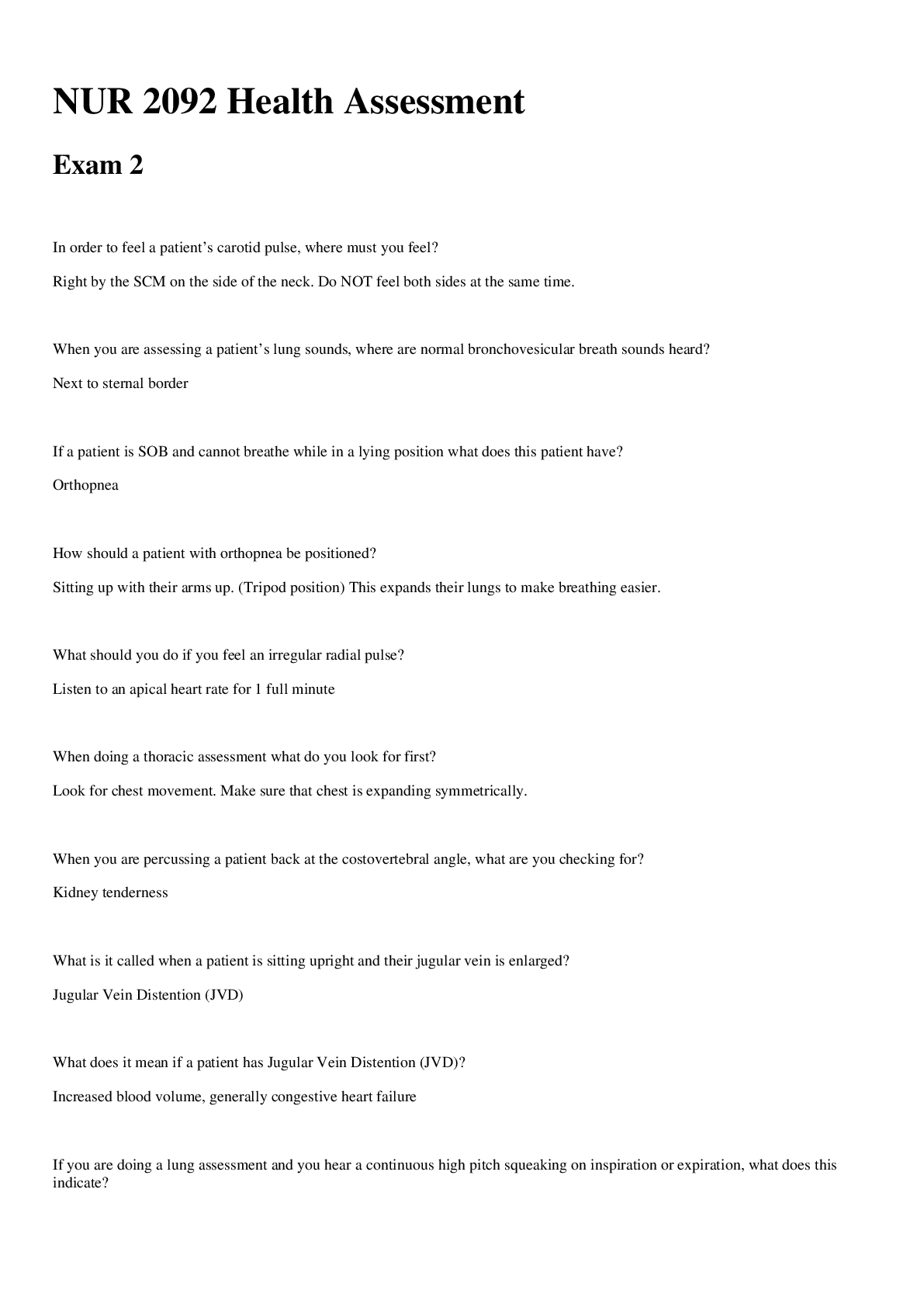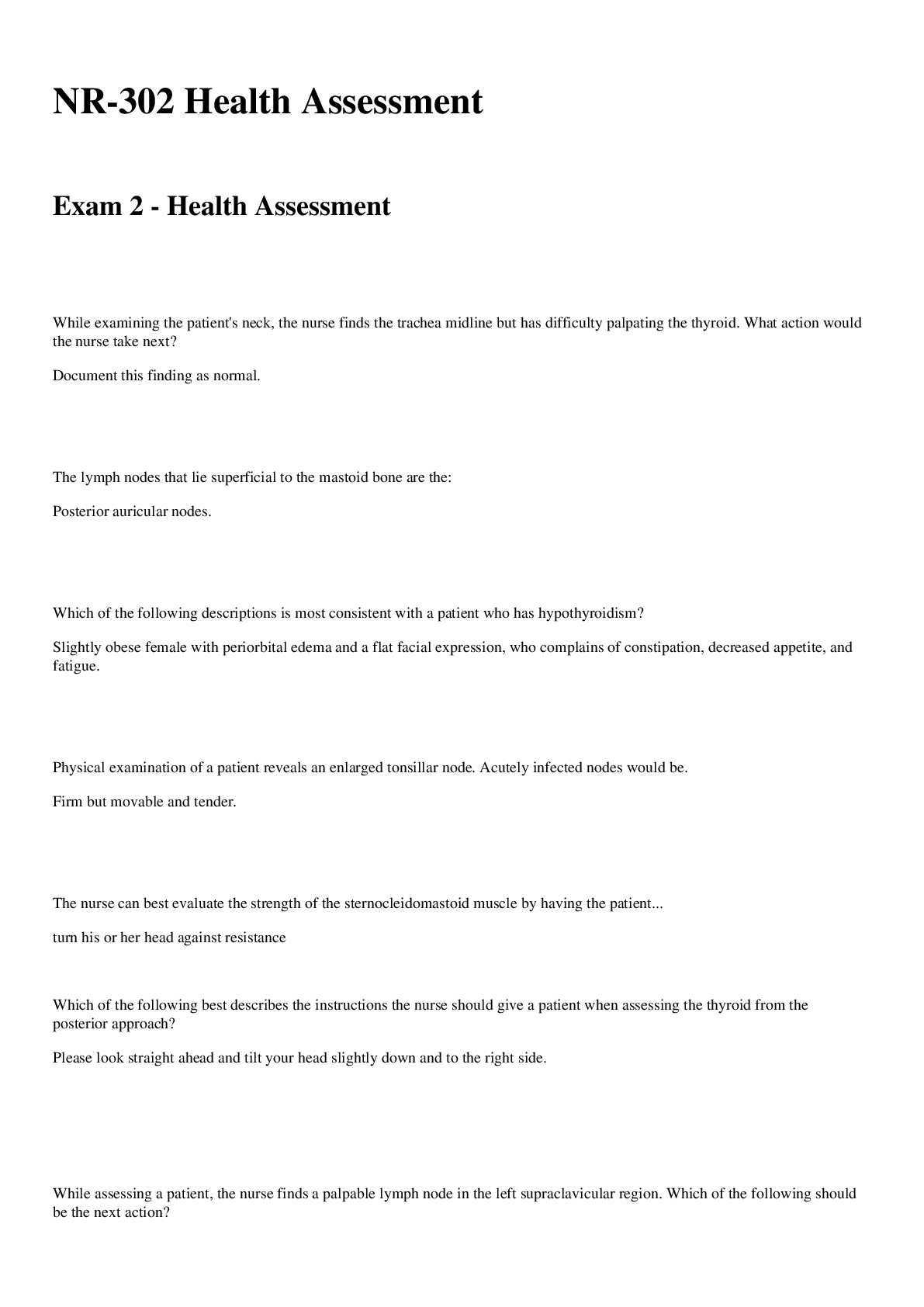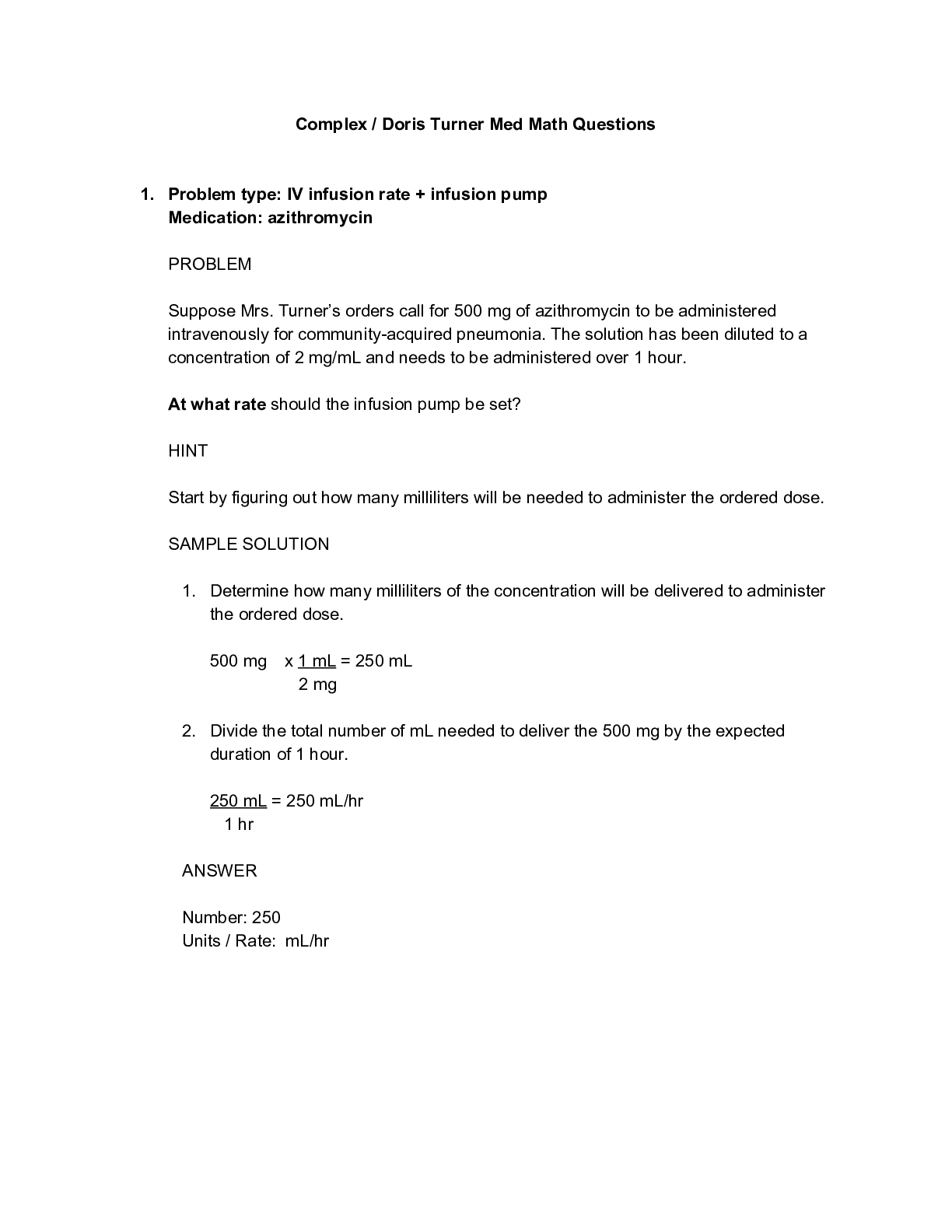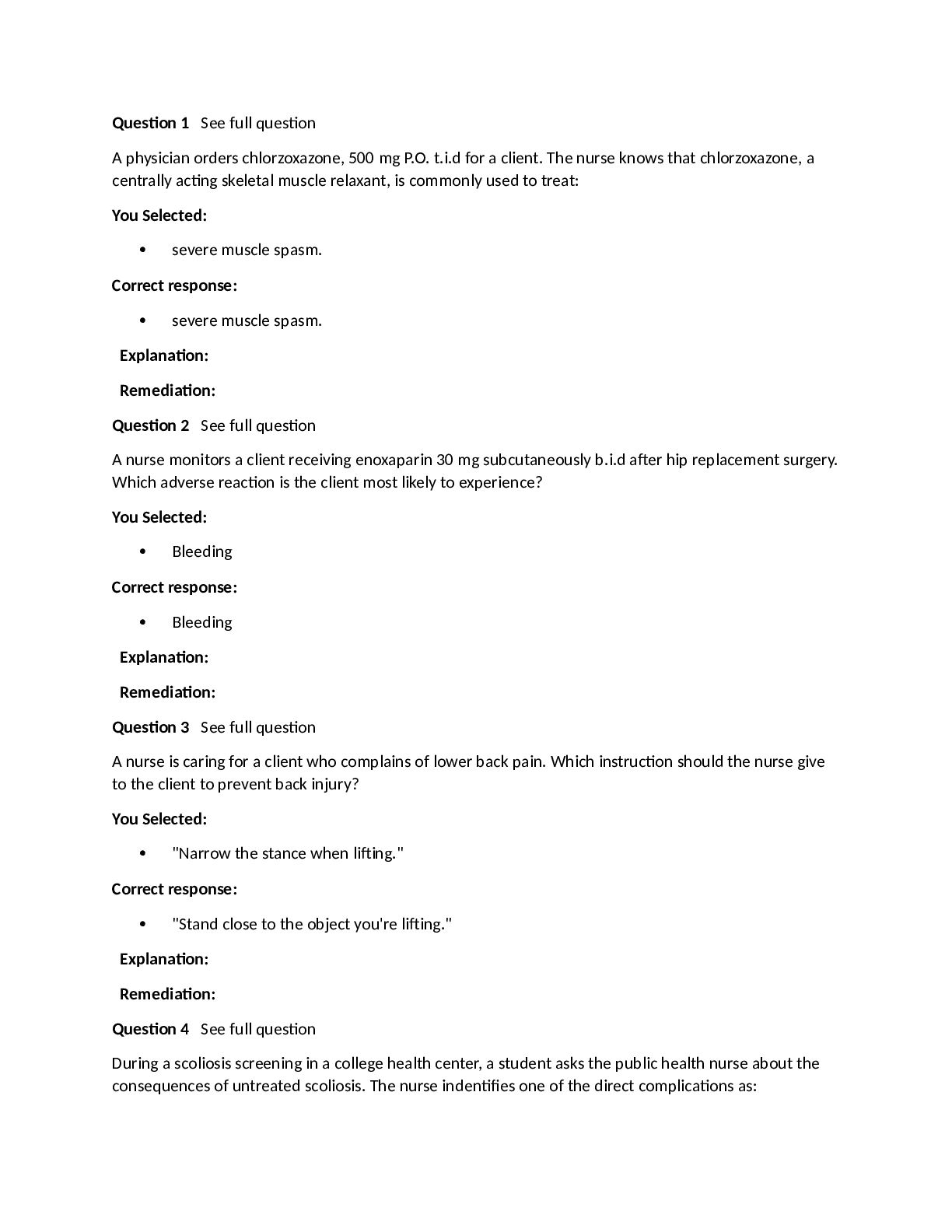*NURSING > EXAM > NUR 2092 Health Assessment Exam 3 latest 2020 with complete solution(Graded A)A LEVEL ASSESSMENT EXA (All)
NUR 2092 Health Assessment Exam 3 latest 2020 with complete solution(Graded A)A LEVEL ASSESSMENT EXAM;Rasmussen College
Document Content and Description Below
Health Assessment Exam 3 QUESTION 1 1. When performing a physical assessment, the first technique the nurse will always use is: a. Inspection. b. Percussion. c. Palpation. d. Aus... cultation. QUESTION 2 1. The nurse is assessing a patient’s skin during an office visit. What part of the hand and technique should be used to best assess the patient’s skin temperature? a. Fingertips; they are more sensitive to small changes in temperature. b. Ulnar portion of the hand; increased blood supply in this area enhances temperature sensitivity. c. Dorsal surface of the hand; the skin is thinner on this surface than on the palms. d. Palmar surface of the hand; this surface is the most sensitive to temperature variations because of its increased nerve supply in this area. QUESTION 3 1. The nurse is teaching a class on basic assessment skills. Which of these statements is true regarding the stethoscope and its use? a. Ideal tubing length should be 22 inches to dampen the distortion of sound. b. Although the stethoscope does not magnify sound, it does block out extraneous room noise. c. Fit and quality of the stethoscope are not as important as its ability to magnify sound. d. Slope of the earpieces should point posteriorly (toward the occiput). QUESTION 4 1. Before auscultating the abdomen for the presence of bowel sounds on a patient, the nurse should: a. Warm the end piece of the stethoscope by placing it in warm water. b. Check the temperature of the room, and offer blankets to the patient if he or she feels cold. c. Ensure that the bell side of the stethoscope is turned to the “on” position. d. Leave the gown on the patient to ensure that he or she does not get chilled during the examination. QUESTION 5 1. The nurse is unable to palpate the right radial pulse on a patient. The best action would be to: a. Use a Doppler device to check for pulsations over the area. b. Use a goniometer to measure the pulsations. c. Check for the presence of pulsations with a stethoscope. d. Auscultate over the area with a fetoscope. QUESTION 6 1. When measuring a patient’s weight, the nurse is aware of which of these guidelines? a. Attempts should be made to weigh the patient at approximately the same time of day, if a sequence of weights is necessary. b. The patient may leave on his or her jacket and shoes as long as these are documented next to the weight. c. The patient is always weighed wearing only his or her undergarments. d. The type of scale does not matter, as long as the weights are similar from day to day. QUESTION 7 1. The nurse is assessing an 80-year-old male patient. Which assessment findings would be considered normal? a. Additional deposits of fat on the thighs and lower legs b. Change in overall body proportion, including a longer trunk and shorter extremities c. Increase in body weight from his younger years d. Presence of kyphosis and flexion in the knees and hips QUESTION 8 1. The nurse should measure rectal temperatures in which of these patients? a. Patient receiving oxygen by nasal cannula b. Comatose adult c. Older adult d. School-age child QUESTION 9 1. The nurse knows that one advantage of the tympanic membrane thermometer (TMT) is that: a. Using the TMT is the most accurate method for measuring body temperature in newborn infants. b. Measuring temperature using the TMT is inexpensive. c. Studies strongly support the use of the TMT in children under the age 6 years. d. Rapid measurement is useful for uncooperative younger children. QUESTION 10 1. The nurse is examining a patient who is complaining of “feeling cold.” Which is a mechanism of heat loss in the body? a. Food digestion b. Radiation c. Metabolism d. Exercise QUESTION 11 1. When evaluating a patient’s pain, the nurse knows that an example of acute pain would be: a. Fibromyalgia. b. Arthritic pain. c. Kidney stones. d. Low back pain. QUESTION 12 1. A patient states that the pain medication is “not working” and rates his postoperative pain at a 10 on a 1-to-10 scale. Which of these assessment findings indicates an acute pain response to poorly controlled pain? a. Confusion b. Depression c. Increased blood pressure and pulse d. Hyperventilation QUESTION 13 1. The nurse is assessing a patient’s pain. The nurse knows that the most reliable indicator of pain would be the: a. Patient’s vital signs. b. Results of a computerized axial tomographic scan. c. Physical examination. d. Subjective report. QUESTION 14 1. The nurse is reviewing the principles of pain. Which type of pain is due to an abnormal processing of the pain impulse through the peripheral or central nervous system? a. Cutaneous b. Neuropathic c. Visceral d. Referred QUESTION 15 1. When assessing the intensity of a patient’s pain, which question by the nurse is appropriate? a. “What does your pain feel like?” b. “What makes your pain better or worse?” c. “How much pain do you have now?” d. “How does pain limit your activities?” [Show More]
Last updated: 1 year ago
Preview 1 out of 4 pages
Instant download

Buy this document to get the full access instantly
Instant Download Access after purchase
Add to cartInstant download
Reviews( 0 )
Document information
Connected school, study & course
About the document
Uploaded On
Dec 17, 2020
Number of pages
4
Written in
Additional information
This document has been written for:
Uploaded
Dec 17, 2020
Downloads
1
Views
56


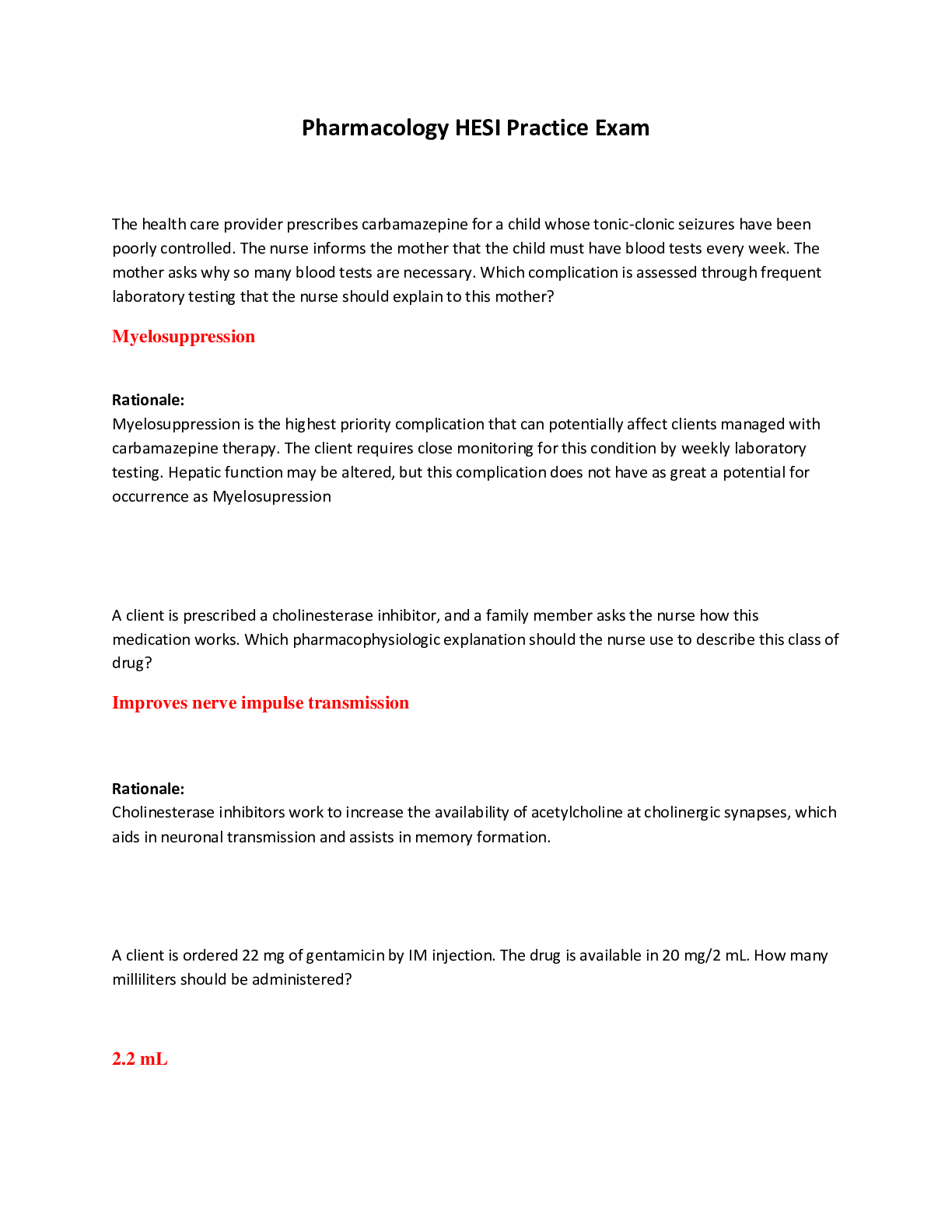
.png)

